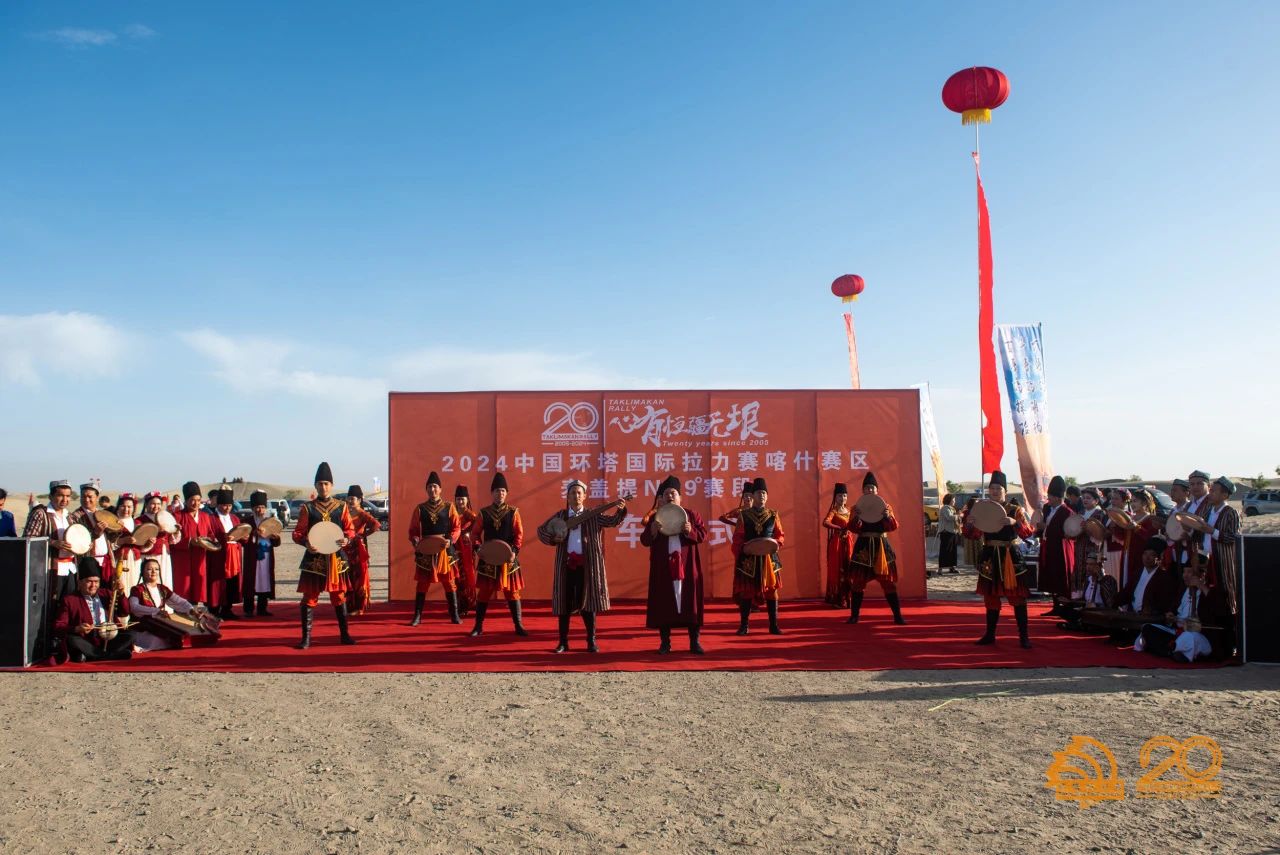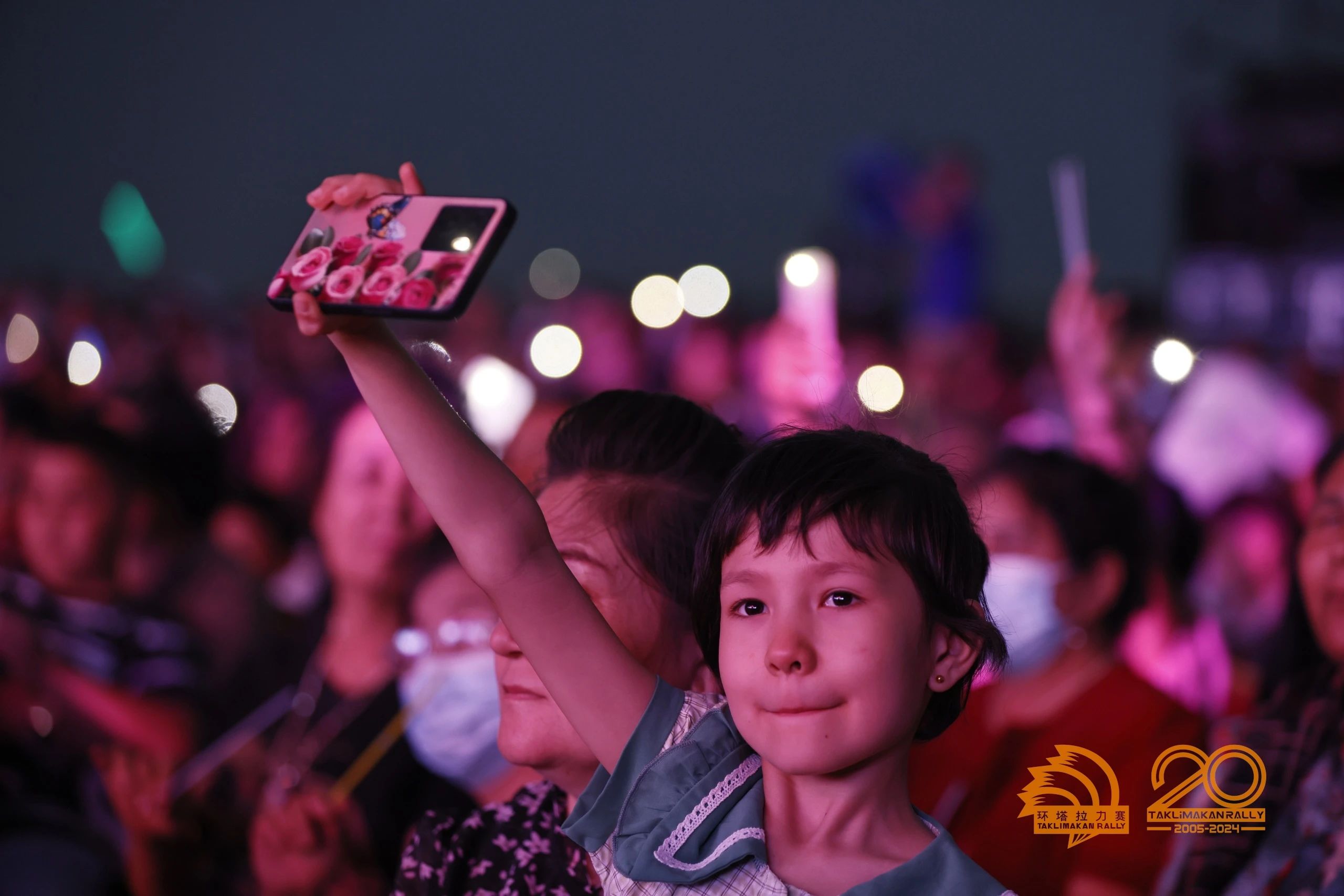With Half the Race Completed, Stage Wins Vary: The Event Serves as a Platform for Cultural and Tourism Promotion
The 2024 Taklimakan Rally concluded the first half of its journey at the Keriya River stage on May 26th. On May 28th, the organizing committee held the Golden Helmet award ceremony for the SS4 Taklimakan stage. As the 20th anniversary of this rally since 2005, this year's Taklimakan Rally showcases new features in terms of racing technology, the number of participating teams, and the race route. The role of host cities in the rally is becoming increasingly prominent, with the rally serving as a driving force for the regional social, economic, and cultural development.

T1+ racing car in full bloom
As of the overall standings for the SS4 stage, there are 7 T1+ cars among the top ten, 2 cars in the T1.2 two-wheel drive category, and only 1 car in the T1.1 category. Among the four stages that have produced valid results, only one stage was won by a two-wheel drive buggy, while the rest were dominated by T1+ cars.

More than ten years ago, the rally cars introduced in Chinese off-road rallies lagged behind European and American models and technologies by nearly a decade. However, the gap has now significantly narrowed. A notable example is the introduction of the T1+ category cars by the FIA after the 2021 Dakar Rally, which broke the dominance of two-wheel drive buggies. In the same year, China's Jiujiang Racing team tested the first independently developed T1+ car at the Dahaidap Endurance Race.
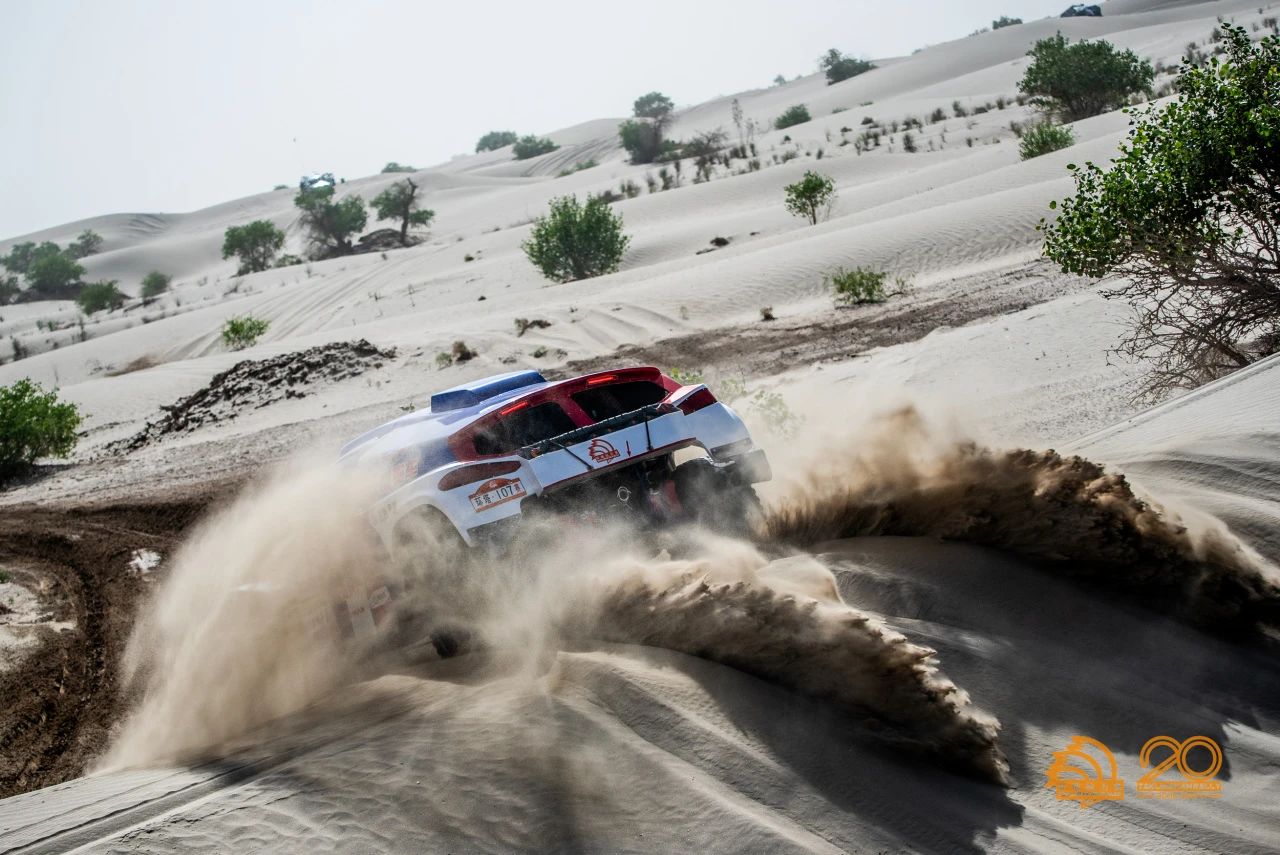
The increase in the number of top-tier race cars can elevate the level of the competition and allow drivers to experience high-intensity pace and extreme vehicle control in high-performance cars, thereby enhancing their personal skills. At present, the range of T1+ cars in China is diverse, including directly imported models, independently developed ones, and those modified from original T1.1 cars. Behind the emergence of these top-level vehicles, events like the Taklimakan Rally provide a platform for showcasing these cars and lay the foundation for the development of China's racing industry

Golden Helmets Find Their Owners
On the afternoon of May 28th, the Taklimakan Rally organizing committee held the Golden Helmet award ceremony for the SS4 Taklimakan stage at the Luopu bivouac. Amidst celebratory music, the winning drivers from each category mounted to the stage to receive the prestigious Golden Helmet, symbolizing their stage victories.
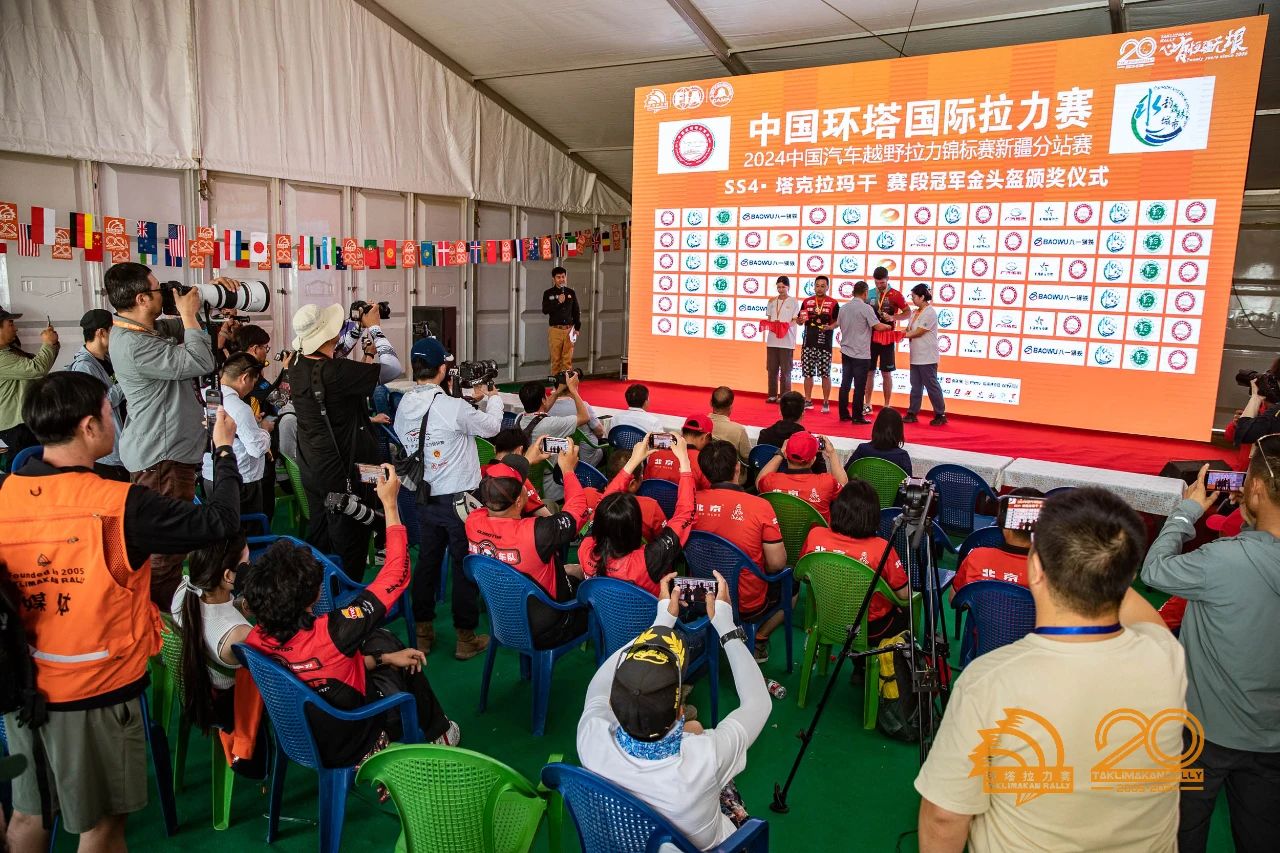
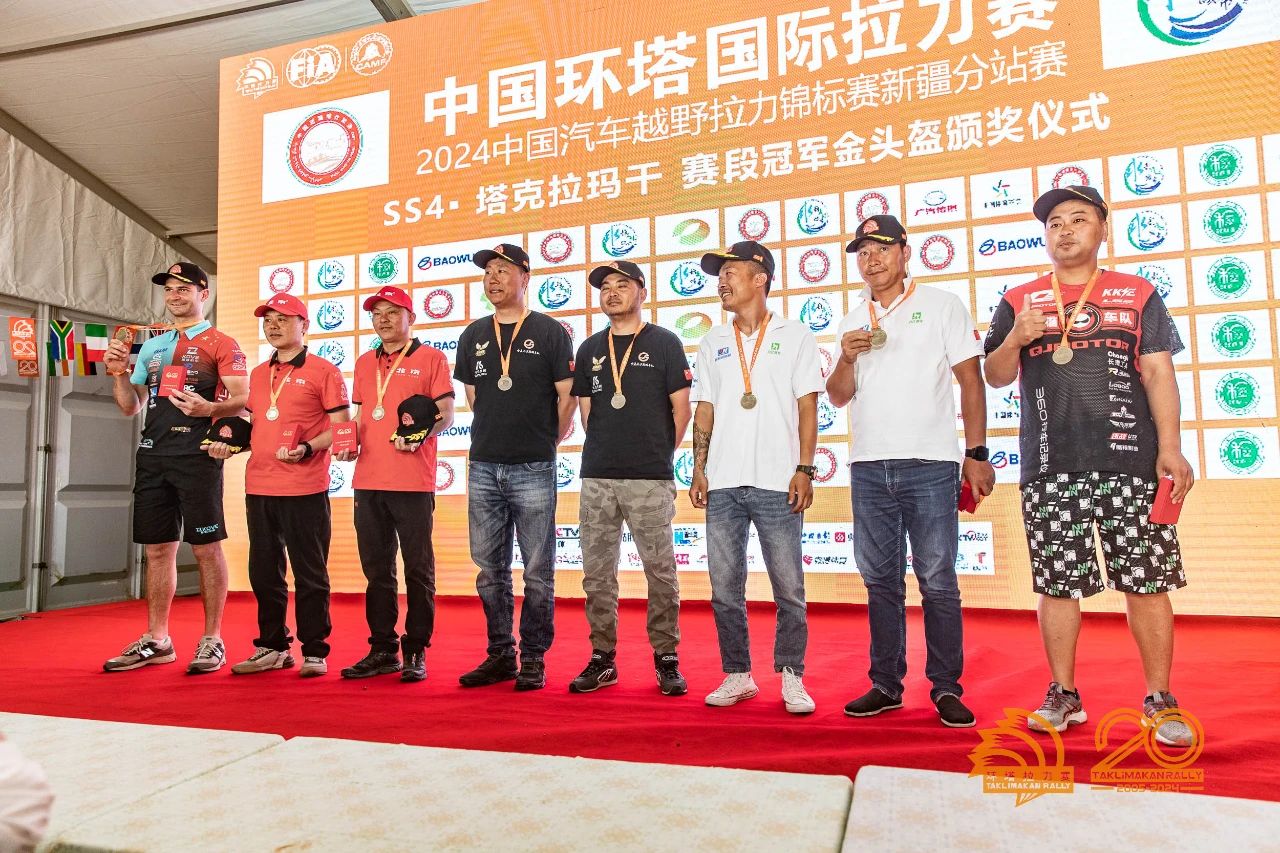
The Golden Helmet winners for the SS4 Taklimakan stage in the car category are:
Wang Shilin and Tian Lei from the Hebei Qian'an Jiujiang Automotive and Motorcycle Sports Club (T1+ category); Liu Yangui and Fu Xinming from the Shaanxi Yunxiang Team (T1.1 category); Su Haotian and Wang Yicheng from the Kunming Kedeng Group Eagle Racing Team (T1.2 category); Li Changbin and Feng Congbiao from the Tangshan Mantuyou Modified Duonai Shock Absorber Team (T1.3 category); Meng Bin and Huang Zhifeng from the Beijing Automotive Team (T2.1 category); Wang Qingxi and Guo Feng from the UK Bell Lubricants Jidao Sports Team (T3 category). In the motorcycle category, the Golden Helmet was awarded to Neels from theKOVE Motor Off-road Team. The ATV category Golden Helmet winner is Zhou He from the Panda Team.
Significance of Kashgar as the first bivouac on the 20th anniversary of the Taklimakan Rally. Choosing Kashgar as the first camp on the 20th anniversary of the Taklimakan Rally holds great significance. Going back to 2005, the closing ceremony of the first Taklimakan Rally was held in Kashgar. Twenty years later, Kashgar reconnects with the rally, hoping to showcase its new image as an open, inclusive, innovative, and dynamic city to the world through the Taklimakan Rally.
During the first half of the rally, the event spurred sports, culture, and tourism activities in the host areas, drawing significant attention. Influencers' Weibo posts about the rally became trending topics, and the rally's brand promotion increased attention to southern Xinjiang. Kashgar City, Yingjisha County, Yuepuhu County, and Luopu County organized creative cultural and tourism activities during the event, integrating various performances and themed activities with the rally. These activities attracted many tourists, driving the robust development of local tourism through the rally's influence. Each city along the route was left with a lasting impression, highlighting the unique charm of the Taklimakan Rally.
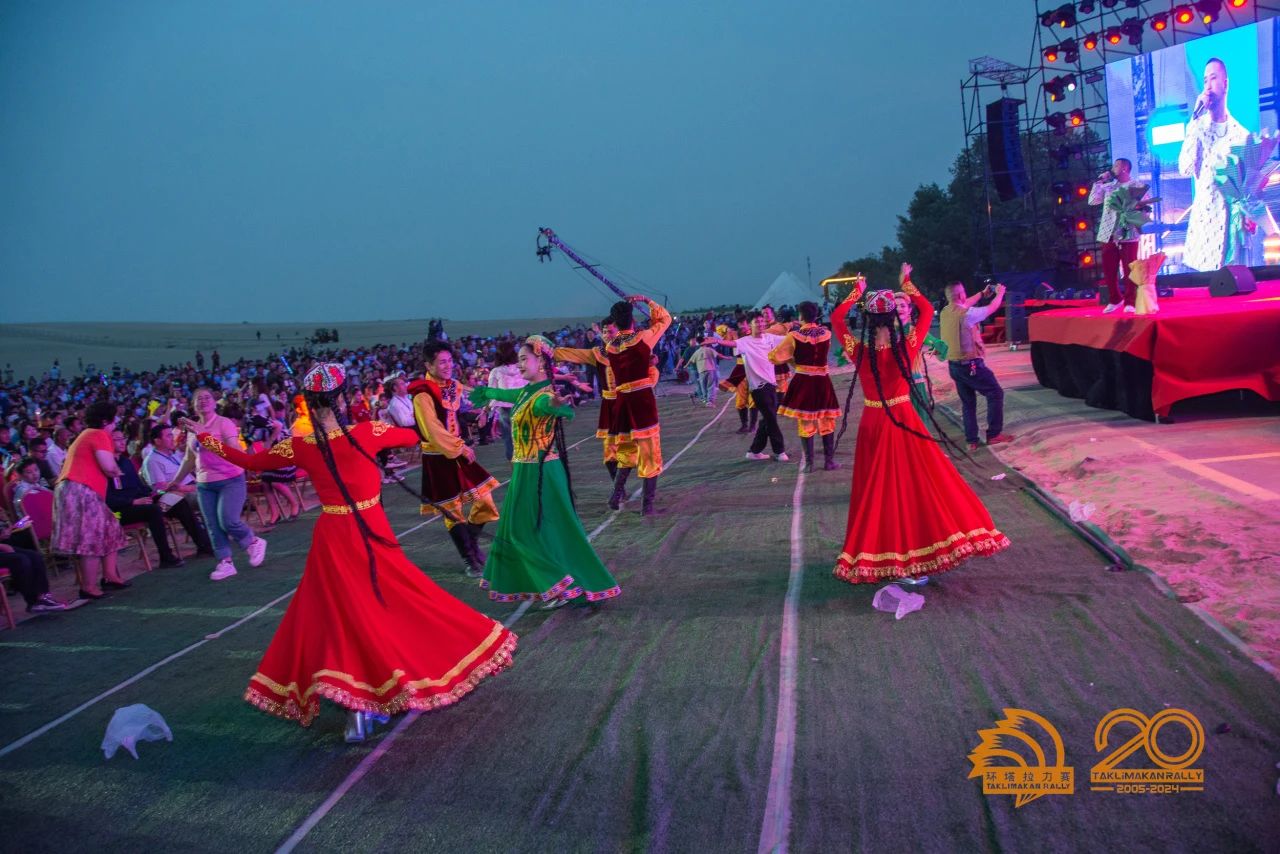
The 2024 China Taklimakan International Rally has reached new heights in both scale and difficulty. It not only provides a platform for drivers to showcase their skills and strength but also offers a spectacular visual feast for the audience. However, the race is only halfway through, and the upcoming stages are still filled with unknowns and challenges. We look forward to the drivers continuing to perform brilliantly in the remaining stages, bringing us more exciting moments.








